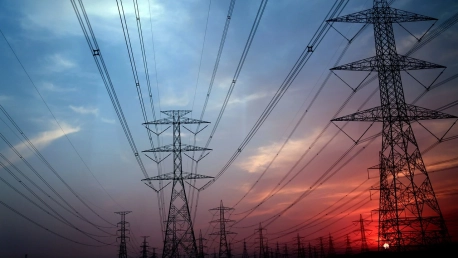The transformation of electrical energy systems through smart grids heralds a significant shift in how electricity is managed and used globally. As we move toward a greater reliance on renewable energy sources, traditional power grids reveal their limitations, with structured development toward resilience and efficiency becoming imperative. Smart grids are the epicenter of this transformative period, bringing in advanced technology to cater to the dynamic nature of modern energy systems.Smart grids enable a two-way interaction of electricity and information, overcoming the challenges renewable energy sources introduce. These sustainable sources, essential for global decarbonization efforts, bring unpredictability into power generation. However, smart grids rise to meet the challenge, offering adaptability and responsiveness in the energy infrastructure, ensuring a reliable supply while supporting clean energy initiatives.
A Leap from Traditional to Smart Grids
The one-way flow of electricity from generation to consumption characteristic of traditional power grids is increasingly seen as outdated in the face of evolving energy needs. This calls for an overhaul, adopting a system that is more attuned to real-time energy demands and distribution nuances.Sophisticated technologies embedded within smart grids are a gateway to this generation of power networks. They pose a more effective method to measure, monitor, and manage the flow of electricity. Smart meters and phasor measurement units stand as front-row technologies, bolstering the grid to deal with contemporary demands. They represent a significant step from the unidirectional, consumption-focused nature of older grids to a dynamic, integrated system fit for the future.
The Technologies Driving Smart Grids
Smart grids embody cutting-edge technologies designed to distribute electricity more effectively and reliably. Each technology plays a vital role in boosting grid efficiency.Crucial to smart grid defense are digital protective relays and automated feeder switches that mitigate faults speedily to avert disruptions. Meanwhile, Phasor Measurement Units (PMUs) provide essential, fast electrical data, bolstering responsive control over the grid.Together, these technologies not only strengthen the grid’s infrastructure but also facilitate an evolution toward a more secure and adaptive energy network, ensuring that energy distribution meets the demands of modern consumption and the challenges posed by an ever-evolving energy landscape. The intelligent synergy between such components signals a new era for electrical grids, pushing the boundaries of what’s possible in energy management and delivery.
The Role of Smart Meters and Consumer Interaction
Smart meters form the core interface between the energy system and its users. Through real-time data on energy consumption, these devices empower consumers with greater oversight and control over their energy habits.Such timely information encourages a calculated approach to energy usage, providing utilities and customers actionable insights. Smart meters are facilitators of sophisticated tariff strategies, incentivizing users to modify consumption patterns to echo grid demands, incentivizing cost-saving and efficient energy use.
Demand Response and Energy Management
Demand response is a game-changer in energy management, departing from the old approach where energy generation was scaled to meet demand. Instead, it adjusts consumer usage to maintain grid stability. This innovative strategy smartly aligns energy consumption with availability through smart grids, which communicate with various devices to dynamically balance the load. This adaptability not only eases the burden on our energy infrastructures but also addresses the unpredictability of renewable sources. By doing so, demand response is a key player in fostering a more resilient and greener energy network. It’s a transformative shift that not only promotes energy efficiency but also supports the integration of sustainable resources, contributing to an environmentally friendly grid and reducing dependence on conventional power plants. This modern approach optimizes the synergy between supply and demand, signifying a paradigm shift toward a smarter and more adaptive energy future.
Integrating Renewable Energy and Storage
The nimble and responsive nature of smart grids presents unparalleled potential for renewable energy integration. They are inherently equipped to manage the variable fluctuations in power associated with renewables.This flexibility is extended to integrating energy storage systems, which capture surplus renewable energy when production is high. The stored energy serves as a buffer, released into the grid when production wanes, smoothing out the supply and ensuring stable electricity delivery even when renewable sources are less productive.
Global Adoption and Future Outlook
Over fifty nations have taken major strides toward revolutionizing their energy systems by adopting smart grid technologies. These initiatives, fueled by the desire for more efficient power distribution, reduced environmental impacts, and heightened grid stability, underscore the transformative potential of smart grids. As the quest for sustainability intensifies, with a goal of achieving net-zero emissions by 2050, the importance of smart grids becomes increasingly apparent. These advanced energy networks are not just solutions for contemporary energy issues but are also crucial for overcoming future obstacles. The strategic deployment of smart grids is thus a cornerstone in the evolutionary trajectory of global energy infrastructures, promising a reliable and eco-friendly trajectory toward meeting the world’s energy needs.









